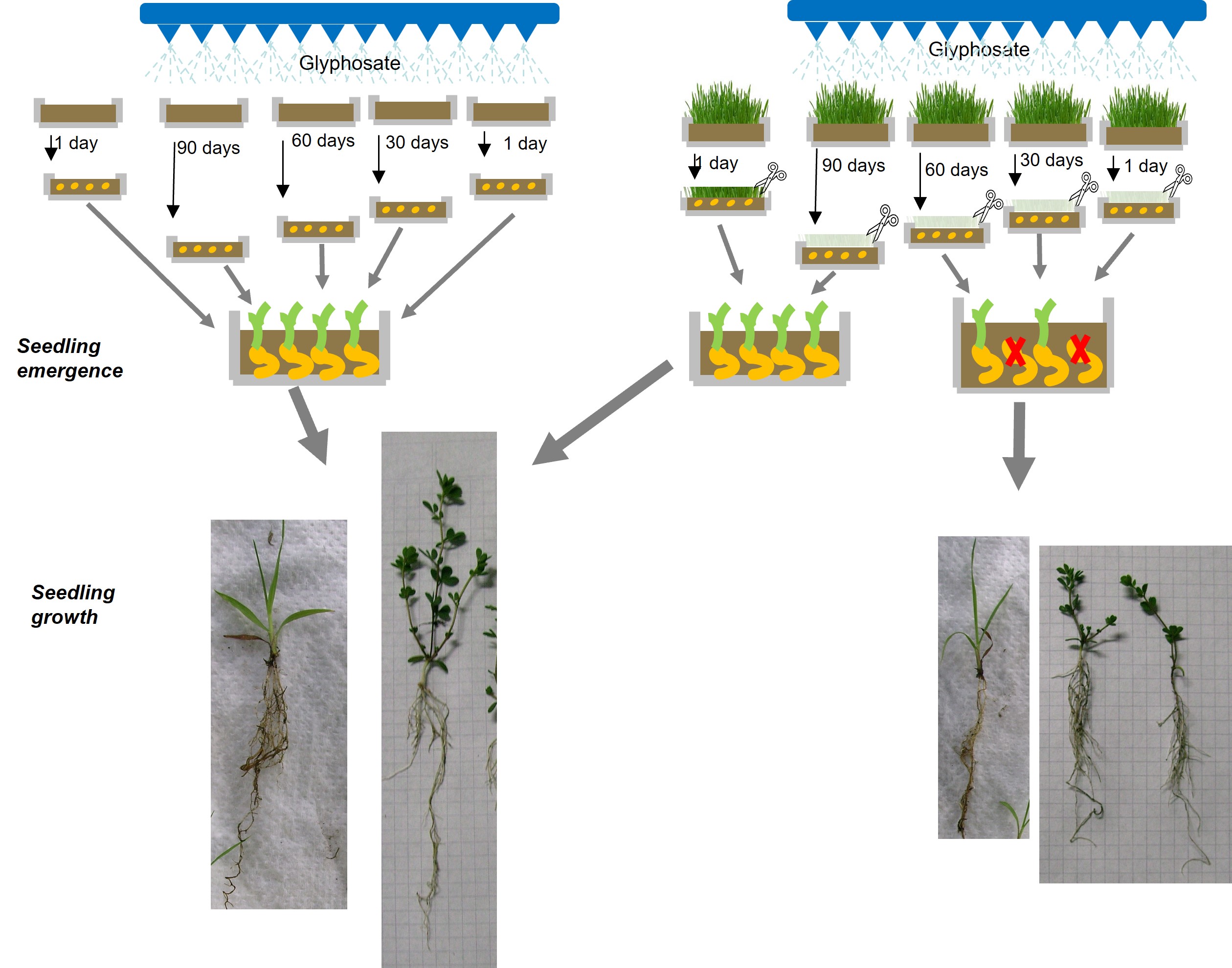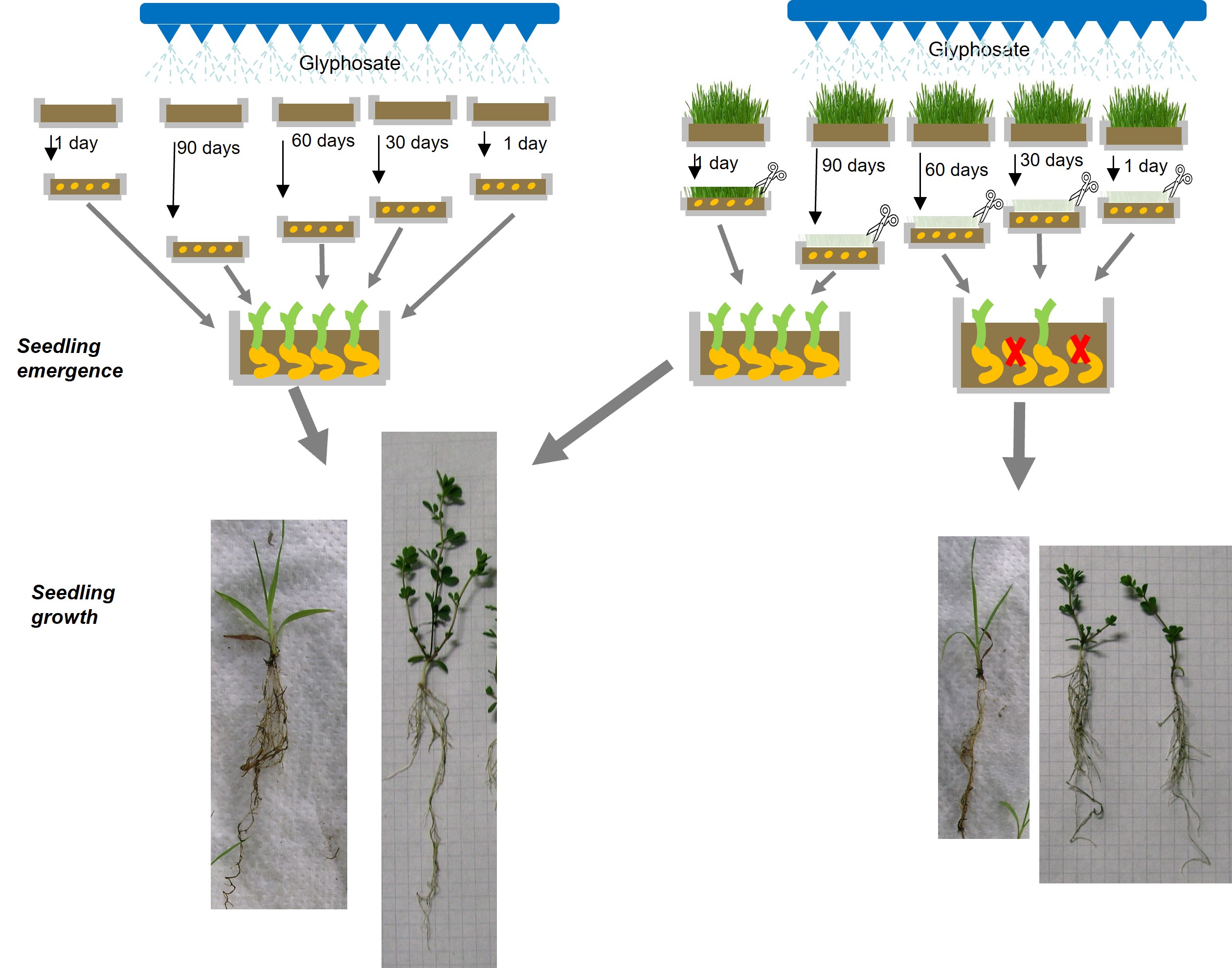Glyphosate sprayed on the pre-existing vegetation reduces seedling emergence and growth of forage species
DOI:
https://doi.org/10.48162/rev.39.063Keywords:
herbicide, germination, legumes, grass, vegetation cover, bare soil, elapsed-timeAbstract

Seeding pastures or forage crops by no-tillage methods usually involves the spray of glyphosate to suppress the existing vegetation. While many studies found detrimentaleffects of glyphosate on seed germination and seedling growth of the subsequent crop, others found negligible effects. This study aimed to evaluate the effect of glyphosate spraying on germination, seedling emergence and seedling growth of four forage species: Trifolium repens, Lotus tenuis, Festuca arundinacea and Paspalum dilatatum. The experiment was carried out spraying glyphosate on the pre-existing vegetation and on bare soil 1, 30, 60 and 90 days before sowing, and a control treatmentsprayed with water. Glyphosate sprayed on pre-existing vegetation 1 to 60 days before seeding reduced emergence, while sprayed 1 to 30 or 1 to 60 days before seeding reduced seedlings belowground biomass and root length of all species and aboveground biomass of legumes respect to sprayed 90 days before seeding, sprayed on bare soil, and control treatment. This herbicide would remain active in the soil environment for at least 60 days after spraying when it was previously absorbed by plants, causing a severe damage to seedlings emergence and growth.
Highlights:
- Glyphosate sprayed on pre-existing vegetation 1 to 60 days before seeding reduced seedling emergence of Trifolium repens, Lotus tenuis, Festuca arundinacea and Paspalum dilatatum.
- Glyphosate sprayed on pre-existing vegetation 1-30 or 1-60 days before seeding reduced seedlings belowground biomass and root length of all species and aboveground biomass of legumes
- Gyphosate sprayed 90 days before seeding or sprayed on bare soil did not affect seggling emergence and growth.
- Gyphosate would remain active in the soil environment for at least 60 days after spraying when it was previously absorbed by plants.

Downloads
Published
Issue
Section
License
Copyright (c) 2018 Revista de la Facultad de Ciencias Agrarias UNCuyo

This work is licensed under a Creative Commons Attribution-NonCommercial-ShareAlike 3.0 Unported License.
Aquellos autores/as que tengan publicaciones con esta revista, aceptan las Políticas Editoriales.


